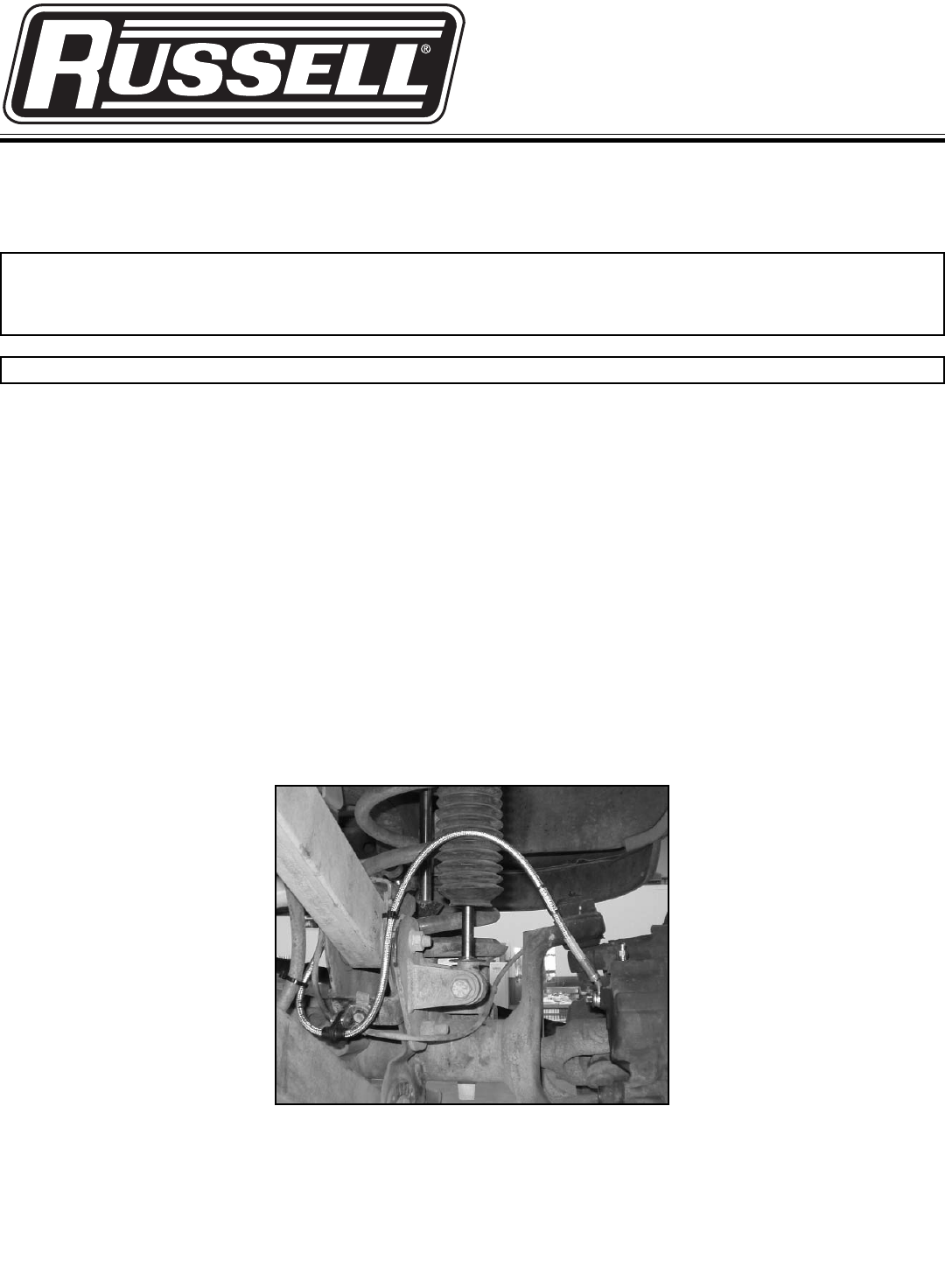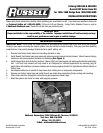
©
2006 Edelbrock Corporation
Brochure No. 63-0193
Catalog #694540 & #694550
Rev. 5/06 - BC/mc
Catalog #694540 & #694550
Russell DOT Brake Hose Kit
for 1994-1999 Dodge Ram 1500/2500 4WD
INSTALLATION INSTRUCTIONS
Please study these instructions carefully before installing your new Brake Line Kit. If you have any questions, please call
our Technical Hotline at: 1-800-416-8628, 7:00 am to 5:00 pm, Monday - Friday, Pacific Standard Time or e-mail us
at Edelbrock.Edelbrock.com. Please fill out and mail your warranty card.
INSTALLATION PROCEDURE
IIMPORTANT NOTE: Do not allow the master cylinder to completely drain of brake fluid at any time during this process.
Doing so may require removing the master cylinder from the vehicle for bench bleeding. Also, use care when handling
brake fluid, as it can quickly damage finished surfaces (paint, plating, etc.).
1. Remove front factory brake hoses and mounting brackets on axle.
2. Install Russell front brake hose banjo ends onto calipers oriented up and directed inboard. Mount hoses at factory
location on axle using supplied brackets and hardware
(See Figure 1).
3. Install inboard hose ends to factory hardlines. Mount right front hose inboard end with supplied bracket and factory
bolt. Left front hose inboard end may need to be configured for different applications by removing plug for
applications with additional crossover hardline and removing supplied bracket for applications without bracket on
factory hose.
4. Use supplied cable ties as needed to keep hoses from rubbing tires or suspension components.
5. Remove rear factory brake hose and install Russell rear brake hose, duplicating factory routing and mounting.
6. Check hose clearance throughout entire steering and suspension travel range.
7. Bleed the system and check for leaks while applying pressure.
Edelbrock Corporation, 2700 California St., Torrance, CA 90503
Tech Line: 800-416-8628
Office: 310-781-2222
E-Mail: edelbrock@edelbrock.com
IMPORTANT NOTE:
Proper installation is the responsibility of the installer. Improper installation will void warranty and may
result in poor performance and engine or vehicle damage.
Fig 1



